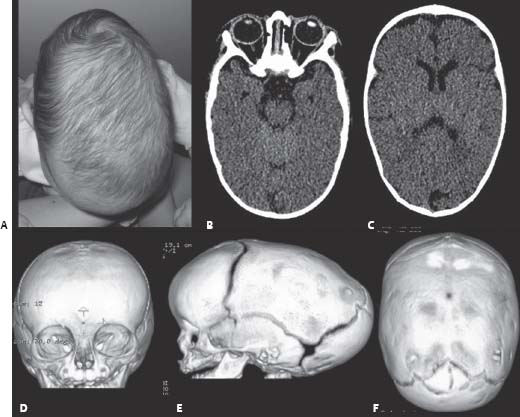Case 68 Scaphocephaly Abdulrahman J. Sabbagh, Jeff rey Atkinson, Jean-Pierre Farmer, and José Luis Montes Fig. 68.1 (A) Head photograph, (B,C) axial computed tomography (CT) scan, and (D) three-dimensional reconstructed CT scan, (E,F) of a child with craniosynostosis.
 Clinical Presentation
Clinical Presentation

 Questions
Questions
 Answers
Answers
68 Scaphocephaly
Case 68 Scaphocephaly Fig. 68.1 (A) Head photograph, (B,C) axial computed tomography (CT) scan, and (D) three-dimensional reconstructed CT scan, (E,F) of a child with craniosynostosis.
 Clinical Presentation
Clinical Presentation

 Questions
Questions
 Answers
Answers
< div class='tao-gold-member'>
Only gold members can continue reading. Log In or Register to continue
Stay updated, free articles. Join our Telegram channel

Full access? Get Clinical Tree


